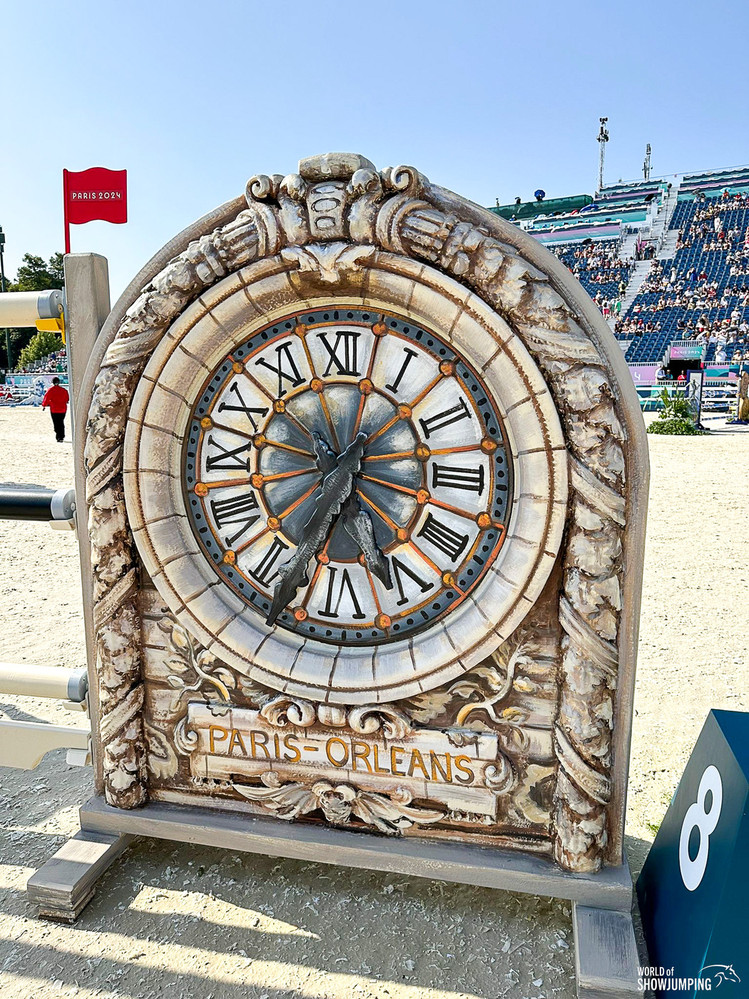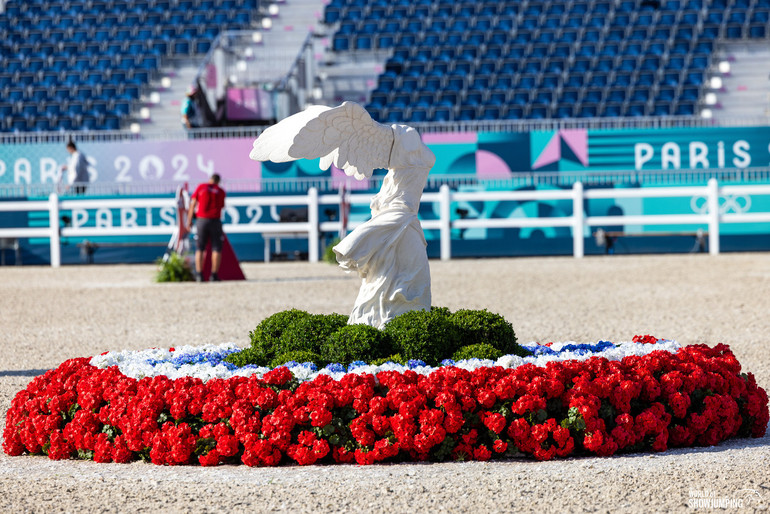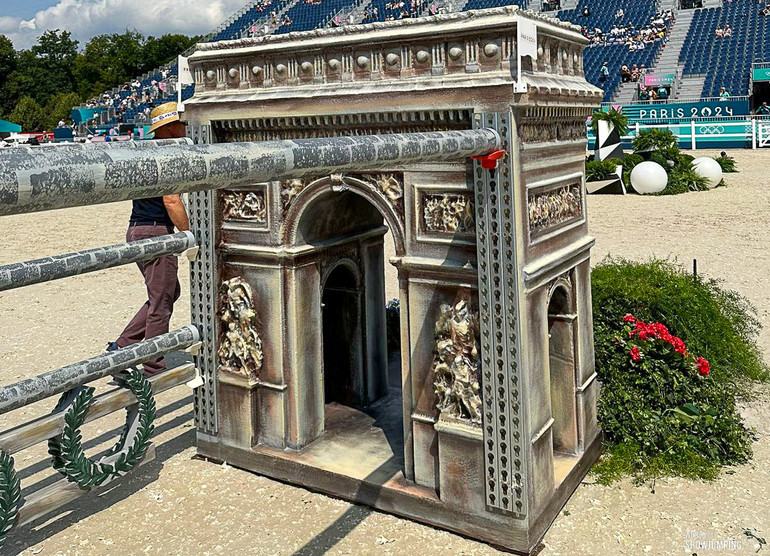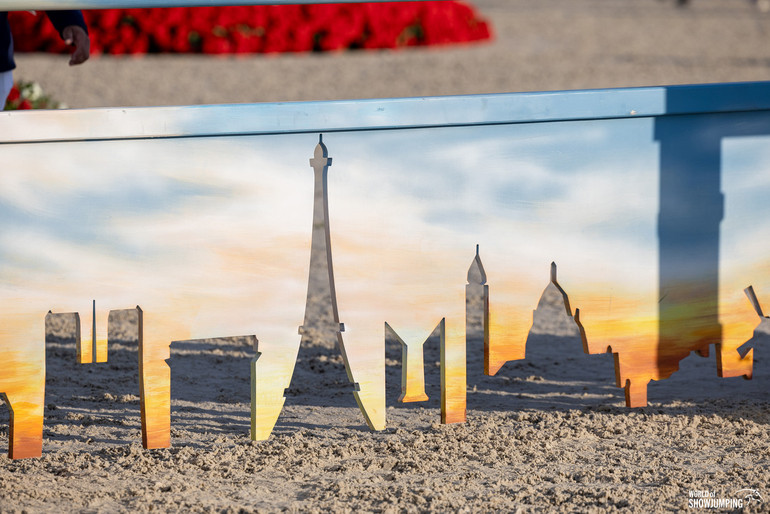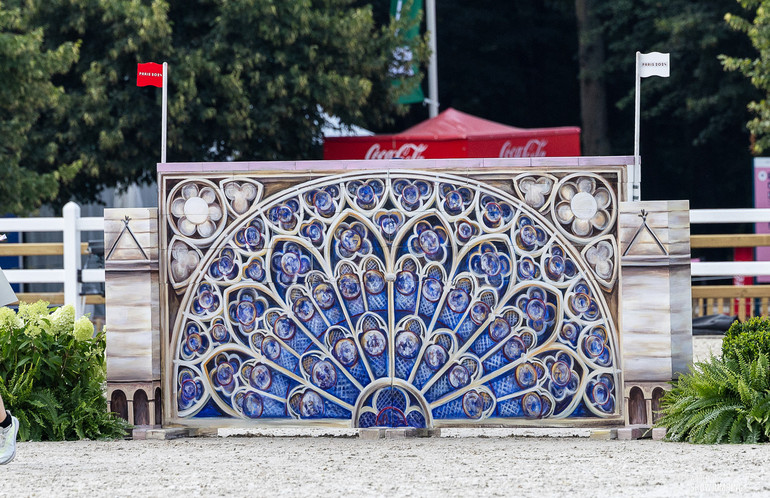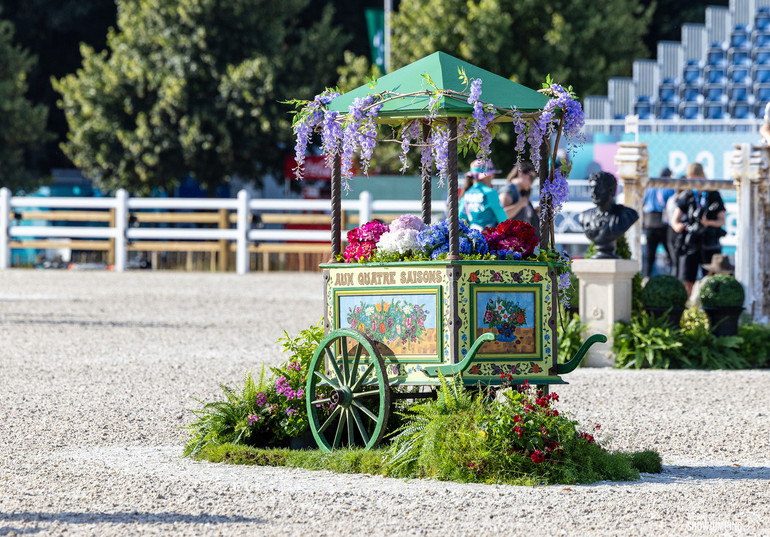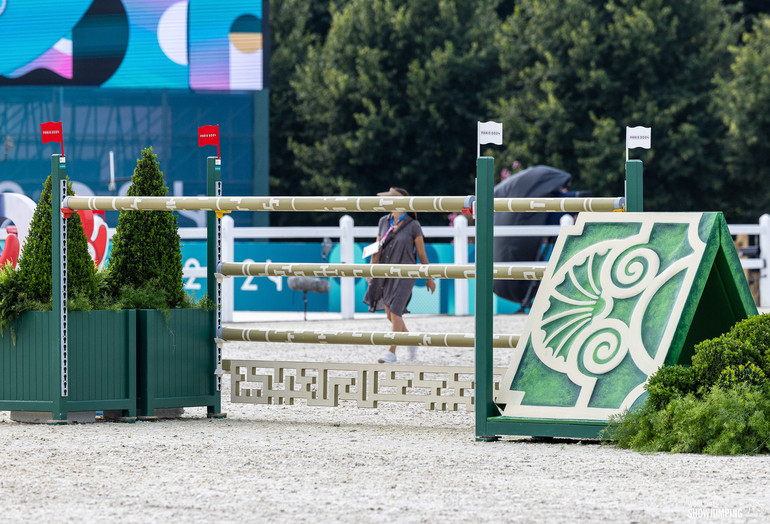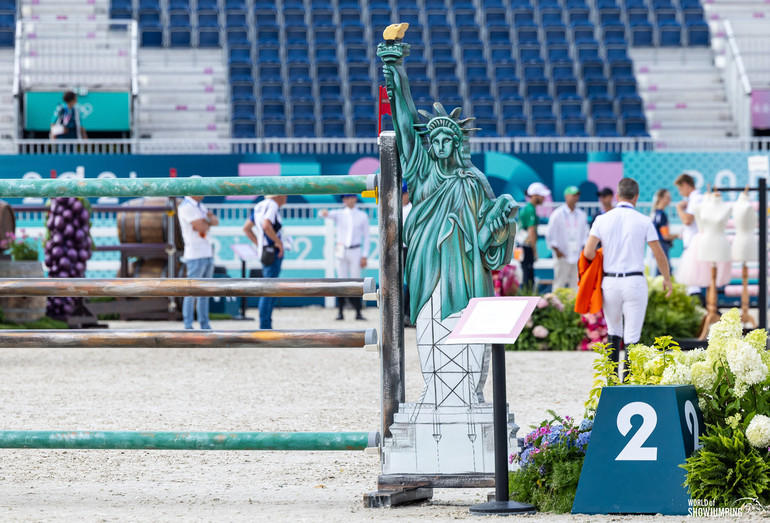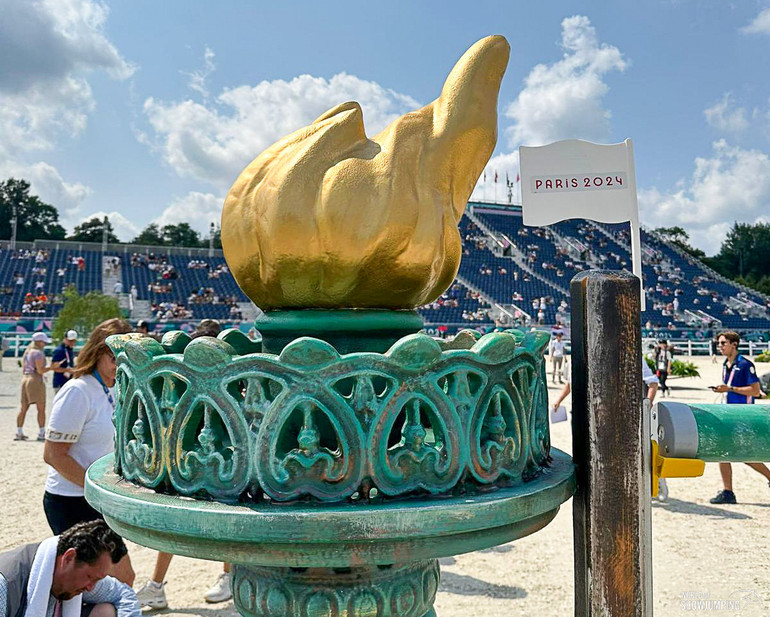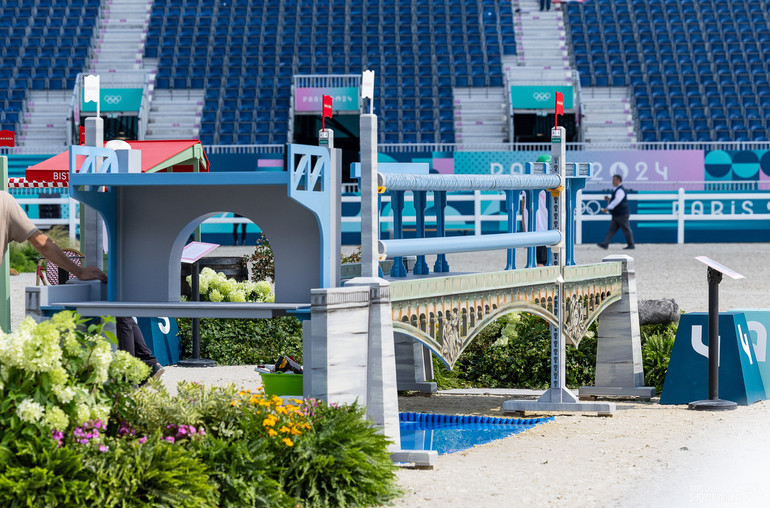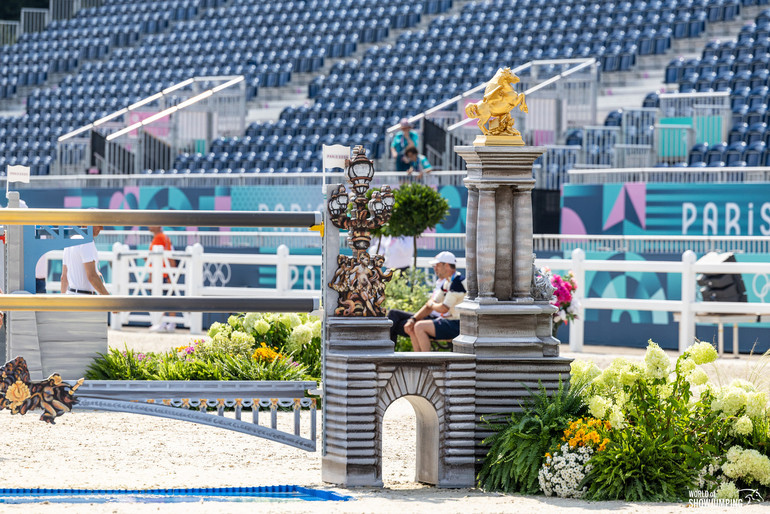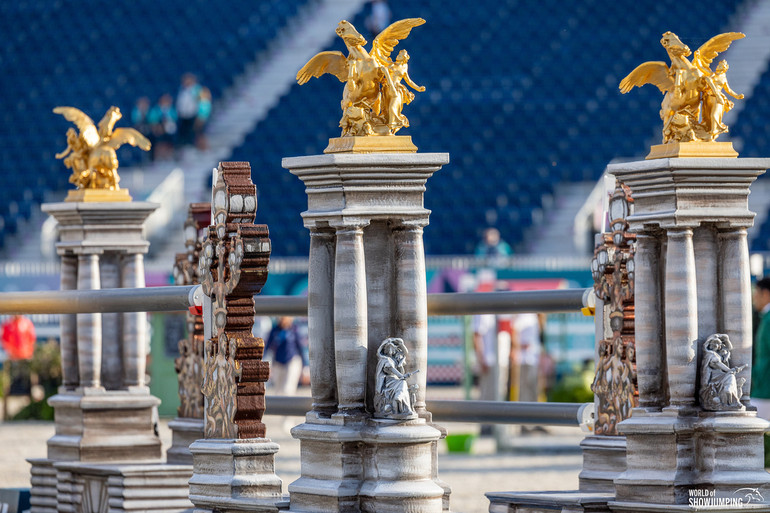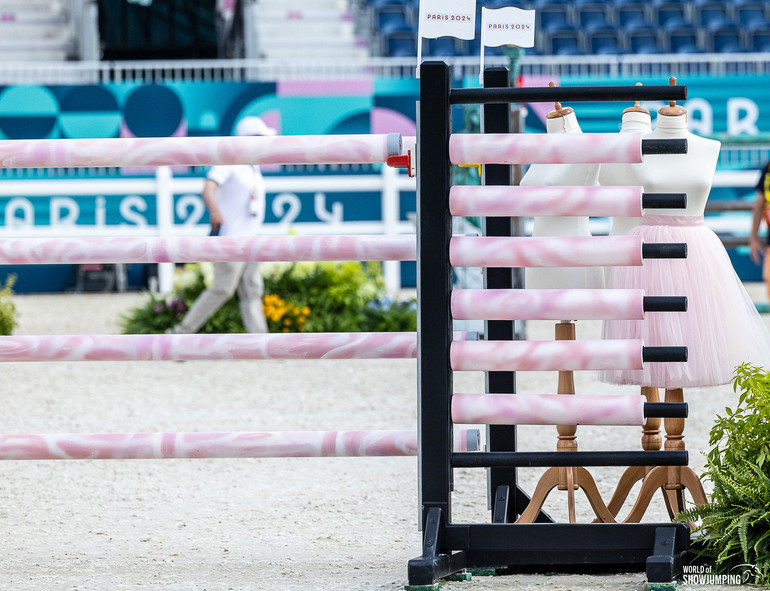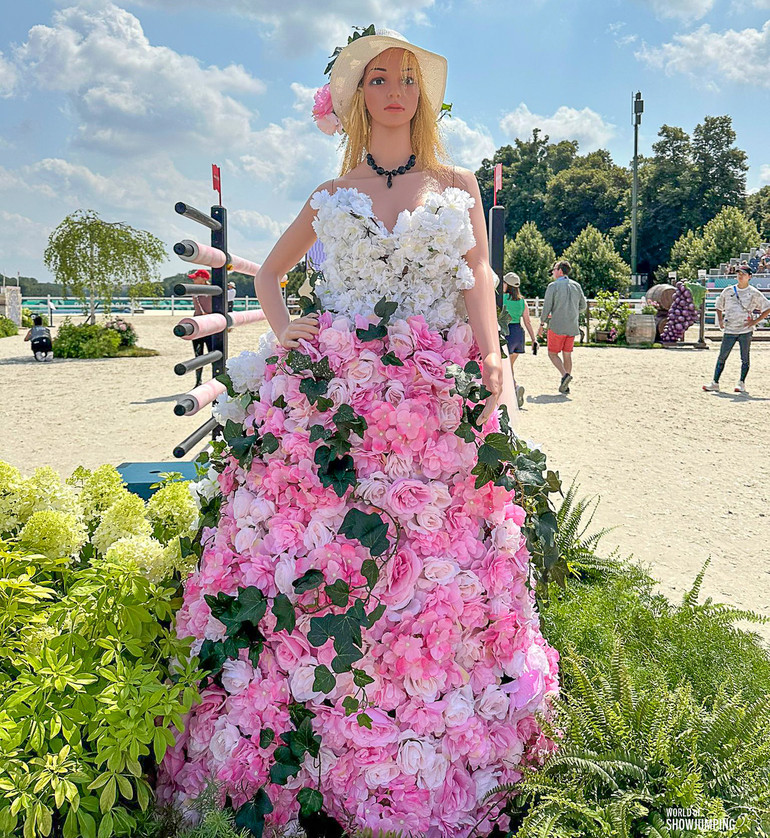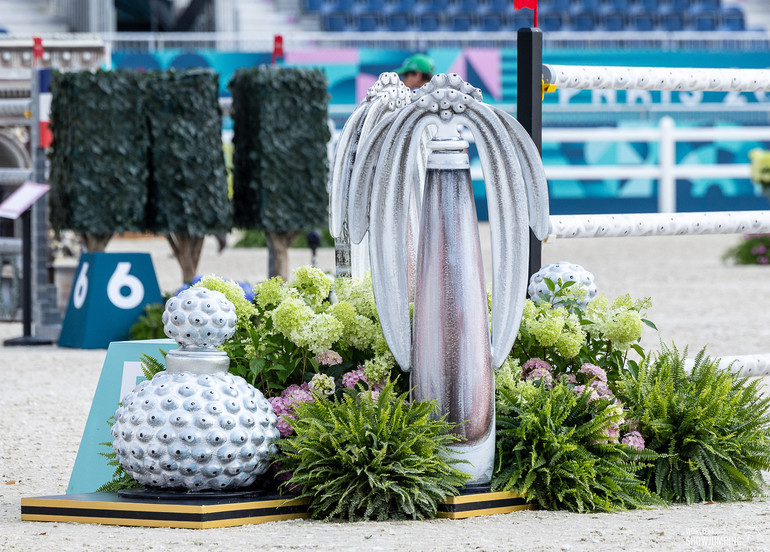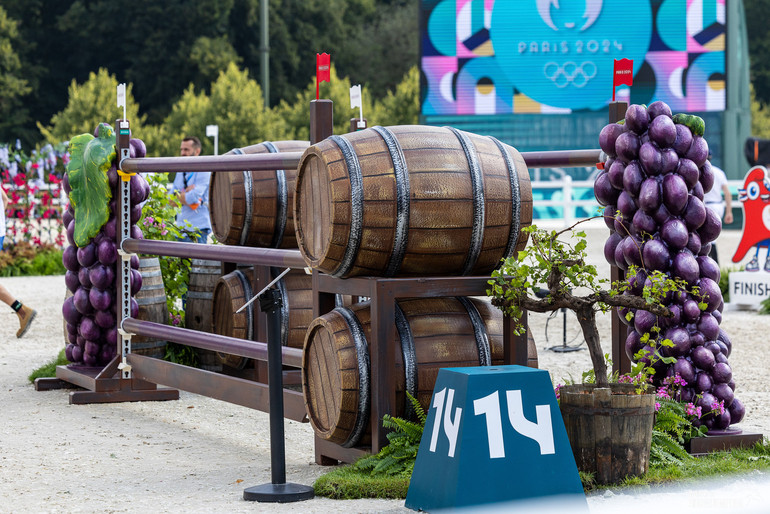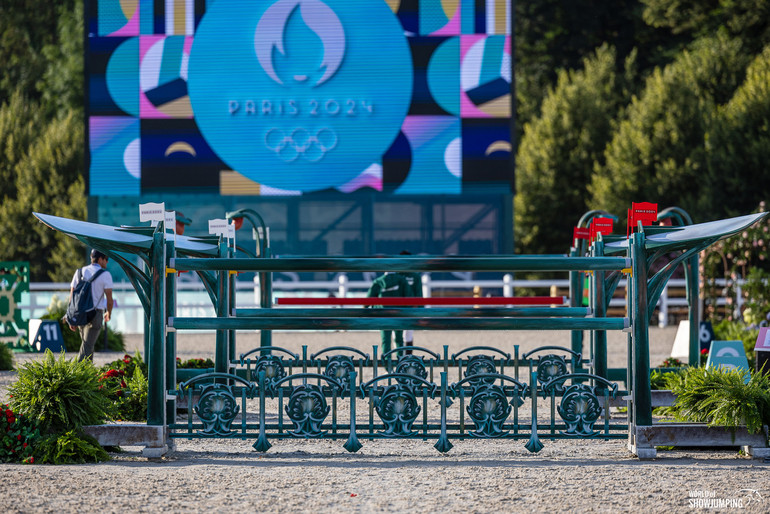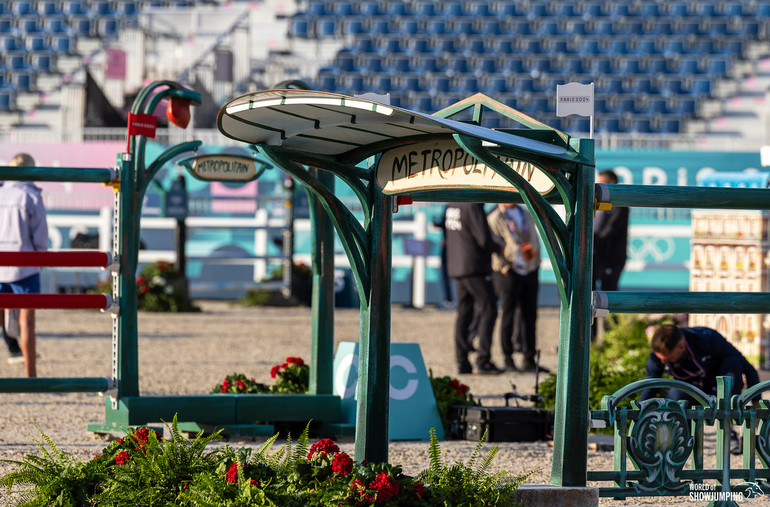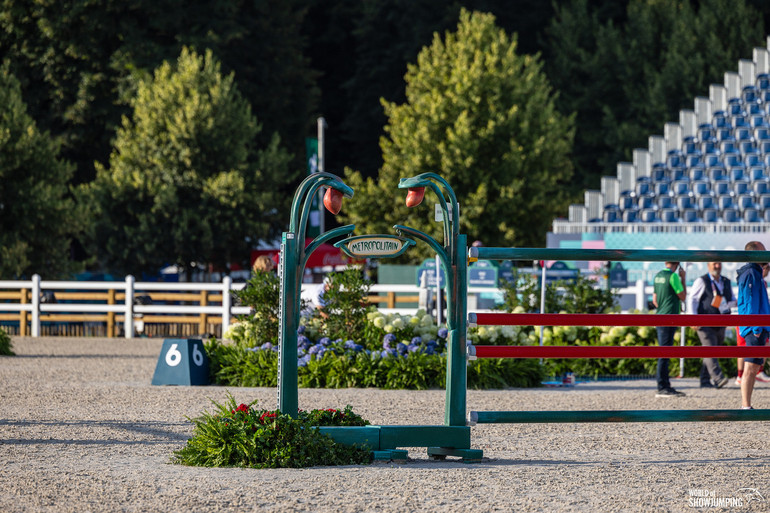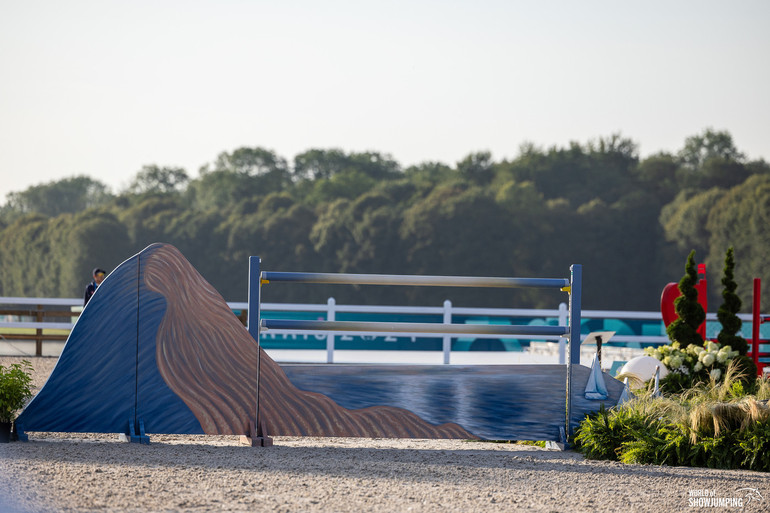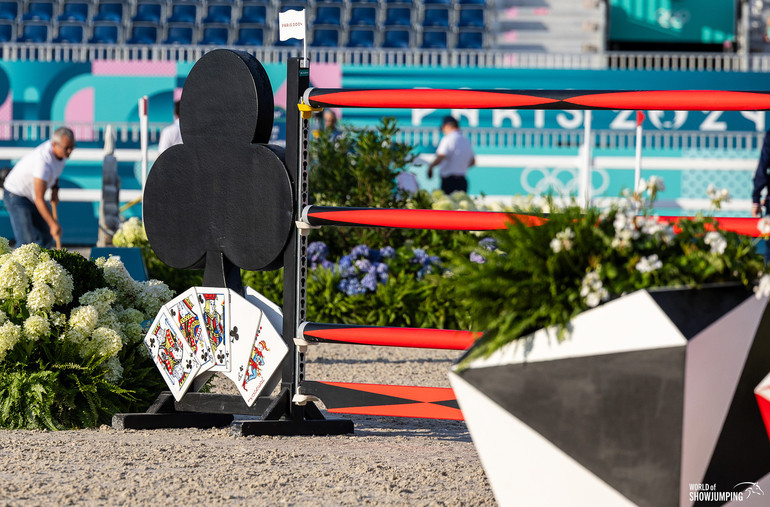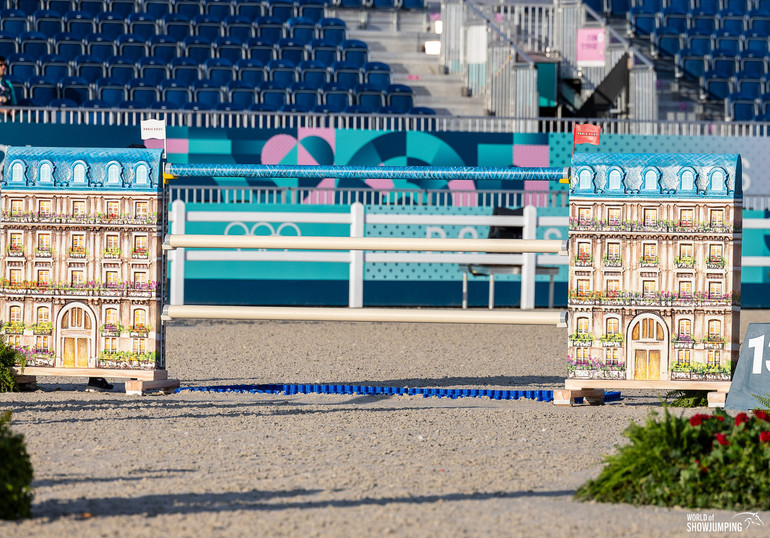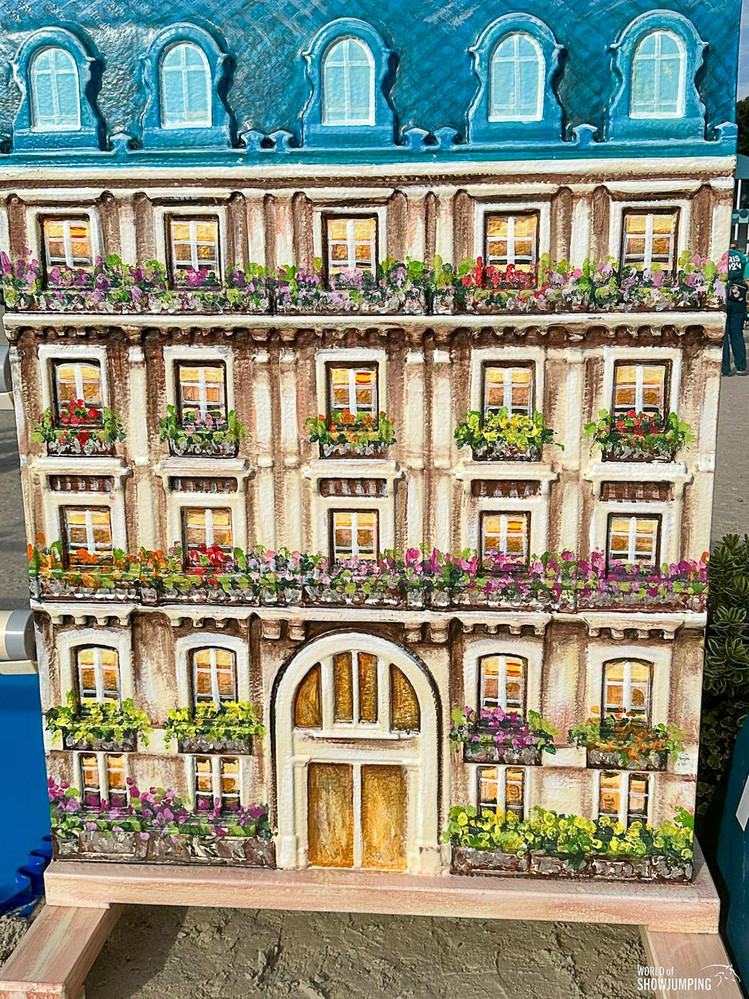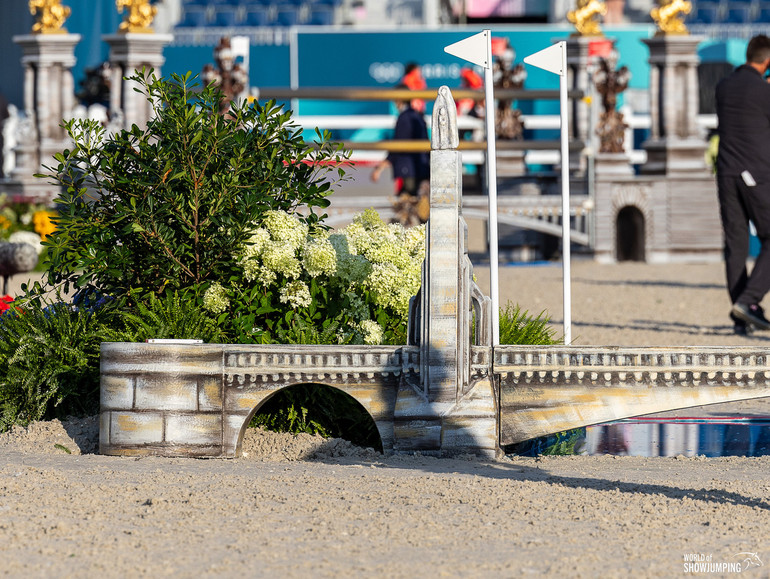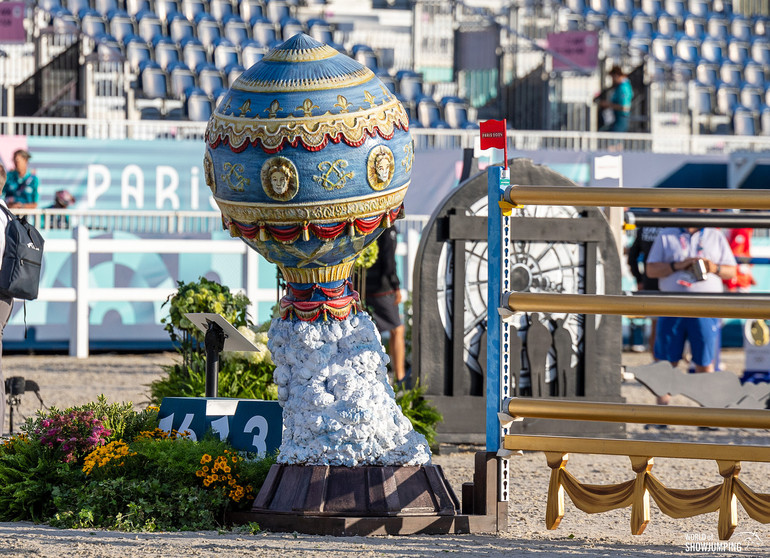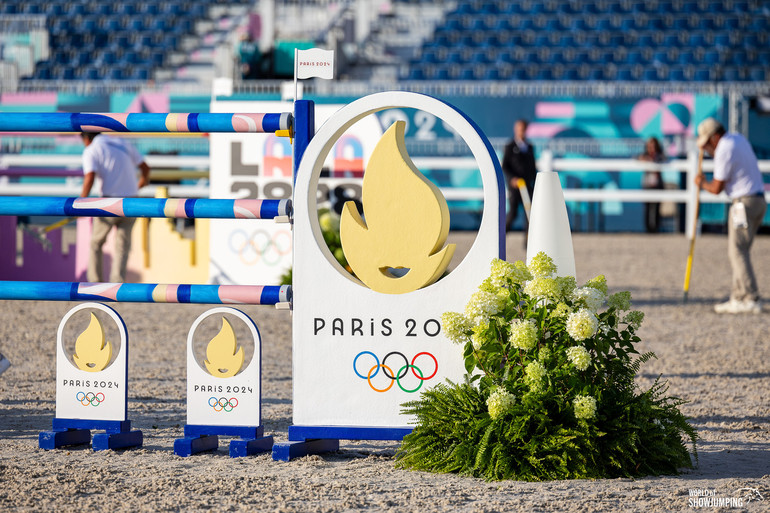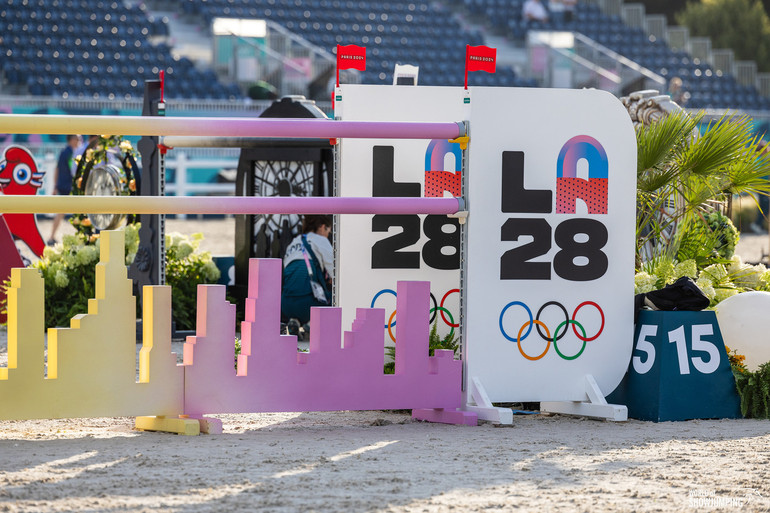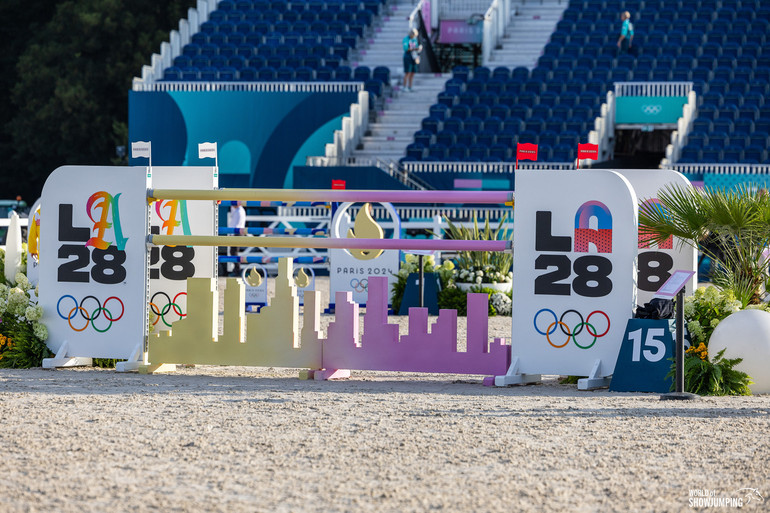Stunningly designed for the once-in-a-lifetime occasion of Paris 2024, the fences course designers Gregory Bodo (FRA) and Santiago Varela (ESP) displayed during the week-long competition in Versailles were as impressive as the backdrop of the Château and its magnificent gardens. And of course, we have dedicated two photo specials to these incredible jumps.
All photos © Jenny Abrahamsson for World of Showjumping. No reproduction of any of the content in this article will be accepted without a written permission, all rights reserved © World of Showjumping.com. If copyright violations occur, a penalty fee will apply.
Horloge d'Orsay, the clock on the façade of the Musée d'Orsay, has become the hallmark and one of the most recognizable architectural features of the museum, which was originally built as a train station, the Gare d'Orsay, for the Universal Exhibition of 1900. It served as a terminus for short-distance trains to the southwest of France.
However, in the 1930s, the station became obsolete for modern trains and was threatened with demolition because it threatened ruin in 1973. Instead, in the 1980s, it was transformed into the Musée d'Orsay, dedicated mainly to the visual arts produced in the period from 1848 to 1914.
Although the upper station has disappeared today, railway activity continues underneath the museum, because underground we can get off at the Museé d'Orsay station of the Regional Express Network, RER.
The museum houses some of the most significant works of the Victorian period and the transition to modernism. Among these are:
- Edouard Monet with "Breakfast on the Grass" and "Olympia" by, defying the artistic conventions of his time.
- Gustave Courbet brings his bold realism with "The Piano Lesson" and "The Origin of the World".
- Vincent van Gogh, although not belonging to the Victorian period, adds his genius with "Starry Night on the Rhone".
The clock of the Musée d'Orsay is located on the left side of the museum's main façade, facing the Seine River. Its distinctive design, with Roman numerals and wrought iron hands, has become an iconic symbol of the museum and can be seen from the opposite bank of the river and from some key points of the city of Paris. It is one of the most photographed sites in the city. This clock, along with the unique architecture of the building, contributes to the charm of the Musée d'Orsay and its importance as one of the most prominent museums in the city.
In the jump we wanted to contrast the large scale of the clock from the inside against the small scale within the composition of the facade of the museum. Its interior view has also become a strong tourist attraction due to the spectacular views that can be seen through the dial of the enormous clock façade.
The Arc de Triomphe is one of the most historically significant national monuments. Its construction began in 1806 by imperial decree of Napoleon Bonaparte, two years after declaring himself emperor of France in the Cathedral of Notre Dame and after his victory in the battle of Austerlitz in 1805, where he promised his men: "You will return home under triumphal arches".
Napoleon Bonaparte played an active role in the political and military affairs of France, and after the success of the French Revolution, in 1799 he took control of France and fought an excessive number of wars that have become known as the Napoleonic wars.
He did not see it finished because its construction was stopped for twelve years due to Napoleon's abdication and was not completed until 1836, 15 years after his death. Although one of his dreams, to pass under the arch, was fulfilled, specifically in 1940, when his remains were transferred to the Palace of the Invalides, where they have rested ever since. are the 128 battles in which the French troops triumphed under Napoleon's command, this triumphal arch dedicated to perpetuate the memory of the victories of the French armies. It was designed by Jean Chalgrin and Jean-Arnaud Raymond, inspired by the Arch of Titus in Rome, and is 49 meters high, much higher than the Arch of Titus, which is 15 meters high and 45 meters wide. At its base, it presents four sculptural groups: The Entry of Napoleon, The Departure of the Volunteers, The Conquest of Alexandria and The Battle of Austerlitz. On the top of the monument are 30 coats of arms with the list of the main French victories, while its interior walls bear the names of 660 soldiers, including 558 generals.
In addition to those who fought in the Revolution and the Napoleonic Wars, the Arc de Triomphe also pays tribute to a man who fought in World War I, and unlike the former, his identity is not known at all. At its foot is the Tomb of the unknown soldier of World War I, with the inscription: ICI REPOSE UN SOLDAT FRANÇAIS MORT POUR LA PATRIE, 1914-1918, "Here lies a French soldier killed for the Fatherland, 1914-1918" The unidentified man was buried here in 1920, to symbolize through the eternal flame, burning non-stop since 1923, the eternal gratitude of France for the unknown soldier, and for all those who fought and died in both world wars.
After World War I, Charles Godefroy passed under the arch with his war plane in 1919 as a symbolicand vindictive act tu nonor French pilots.
In Paris, as in most cities, the urban signs indicating the name of the streets are placed at the end of the roads, usually on the facades. The design of the current plaques was ordered by the Count of Rambuteau in 1847 and is one of the oldest in the world. They are distinguished by their rectangular shape in navy blue enameled metal with a green border and white inscription.
At the top of the plaque, in a semicircle is marked the number of the 'arrondissement' or neighborhood, from 1 to 20. And as an example of cultural city, on many occasions, they indicate a brief description of the character, event or place that they name.
Such is its connection with the cliché image of Paris that there are companies that reproduce personalized plaques as souvenirs.
The Notre-Dame Cathedral, located on the Île de la Cite, is a masterpiece of Gothic architecture that has played a central role in the history of France. Its construction began in 1163 and was completed in the 14th century, making it the most visited French monument. Designed by Bishop Maurice de Sully, the cathedral was conceived as an impressive testimony to the Catholic faith and a symbol of the greatness of Paris.
Over the centuries, Notre-Dame has witnessed significant historical events. During the French Revolution, the cathedral suffered damages and transformations, and some of its religious elements were destroyed. However, it was restored in the 19th century under the direction of architect Eugène Viollet-le-Duc, who added decorative details and rebuilt parts of the structure.
The cathedral achieved worldwide fame thanks to the novel "Our Lady of Paris" by Victor Hugo, published in 1831, which led to a renewed appreciation for its architecture. In addition, road distances from Paris in France are calculated from point 0 in the cathedral courtyard.
Unfortunately, on April 15, 2019, a devastating fire that rocked the world destroyed the central spire and part of the roof, although the main structure survived.
Restoration efforts since then have been aimed at restoring Notre-Dame to its splendor and preserving its architectural and cultural legacy for future generations.
The jardins à la française are French gardens designed in the 17th and 18th centuries, known for their rigorous symmetry, raised flower beds with intricate geometric designs, and a combination of architectural and landscape elements. These gardens reflect the influence of classical art and Italian Renaissance architecture, noted for their elegance and order. Characterized by central axes, linear perspectives, statuary, and symbolic elements, French gardens are a testament to the sophistication and aesthetic refinement that defined the era.
A paradigmatic example of this style is the Garden of Versailles, created by André Le Nôtre for the Palace of Versailles during the reign of Louis XIV. This iconic garden, with its tree-lined avenues, elaborate parterres and allegorical symbolism, has left a lasting mark on garden design worldwide, influencing contemporary appreciation of formal beauty and landscape planning.
The Statue of Liberty is one of the most iconic attractions in the United States, a universal symbol of freedom and democracy, and its image is recognized around the world.
It was a gift from the French people to the United States to commemorate the centennial of their independence from the U.S. and to symbolize the friendship between the two countries. The statue was designed by the French sculptor Frédéric Auguste Bartholdi and its internal structure, initially designed by Viollet Le Duc, was developed by the young engineer Gustave Eiffel, after his untimely death.
The Statue of Liberty was unveiled on October 28, 1886, ten years after the centennial, due to the delay in the work to prepare the base. It is located on Liberty Island in New York Harbor. A visit to the statue and the Island, located nearby, is an important experience for visitors and a reminder of New York's role as a gateway for millions of immigrants who came to the United States in search of a better life.
The statue represents Libertas, the Roman goddess of liberty, and its design includes symbolic elements such as the raised torch, symbolizing the light of freedom, and the tablet with the date of U.S. independence (July 4, 1776) held in her left hand.
Paris also has a replica of the Statue of Liberty, on a smaller scale, which looks like its big sister in New York. It is located at the end of the Ile de Grenelle, in the middle of the Seine River.
The United States returned the favor to the French and gave them on the first centenary of the French Revolution a copy of the Statue of Liberty on a scale four times smaller than the one that stands in the Big Apple. Paris placed it on Swan Island, looking in the direction of its big sister, in a clear and very spiritual New York-Paris connection.
The Bir-Hakeim Bridge crosses the Seine River and connects the 15th arrondissement with Swan Island. Built between 1903 and 1905, its metallic design features ornate arches and pillars, characteristic of the art deco style. Named in memory of the Battle of Bir-Hakeim, which allowed the French to sign the treaty of free passage after defeating General Rommel and his armored army over the Libyan desert (1942), the bridge pays tribute to the bravery of the French forces in that battle.
This two-level bridge serves as a thoroughfare for vehicles and pedestrians on its upper level, while the lower-level houses line 6 of the Parisian metro. In addition to its practical function, the Bir-Hakeim Bridge offers spectacular views of the Eiffel Tower and the Seine River, making it a popular sight for residents and tourists alike.
The Alexandre III Bridge, built in 1900 for the Universal Exposition in Paris, stands out as one of the most elegant and ornate bridges in the city. Named in honor of the Russian Tsar Alexander III, who died in 1894, so he could not get to know the bridge, and it was his son, Tsar Nicholas II who laid the foundation stone of the bridge in 1896. The bridge symbolizes the union in the Franco-Russian alliance and stands as a historical and artistic monument. Its Art Nouveau design includes elaborately decorated bronze lanterns, golden Pegasus statues and other ornamentation that contribute to its unique aesthetics. This bridge is not only a convenient crossing over the Seine River, but also a special place that offers panoramic views of Paris, including the Eiffel Tower and the Invalides.
The Alexandre III Bridge not only serves as an important link between the Champs Elysees and the Grand Palais, but also represents an architectural landmark commemorating the friendship between nations. The statues of Pegasus at the ends of the bridge, along with the intricate decorations and details, contribute to its grandeur and historical significance. This bridge remains an essential landmark in Paris, where engineering combines with artistic elegance to create a visual and cultural experience, now considered a World Heritage Site, within the Seine Riverbanks ensemble.
French haute couture is the ultimate expression of personalized and exclusive fashion. This art of tailoring involves the creation of made-to-measure garments that stand out for their unique quality and meticulous attention to detail.
Exceptional craftsmanship is a hallmark of haute couture, where highly skilled artisans work with the finest materials, from luxurious fabrics to elaborate details such as lace and embroidery. Haute couture designers are known for their creativity and unique vision, presenting innovative collections. These exclusive creations are carried out in the ateliers of fashion houses, specialized workshops that are an integral part of the production process.
Haute couture fashion shows, held during Paris Fashion Week, are prestigious events that showcase the unique creations of designers. Their shows turn the city into a hotbed of trends every season, with events everywhere, and an undisputed and lavish world reference. What Paris says in this regard is law.
The exclusivity and prestige associated with haute couture make it a status symbol. Strict regulation by the Chambre Syndicale de la Haute Couture ensures that only fashion houses that meet rigorous criteria can carry the distinction of haute couture. In other words, French haute couture fuses artistic creativity with impeccable craftsmanship, standing out in the fashion world and contributing to the prestige of Paris as the fashion capital of the world.
The passion for fashion as we know it today began in Versailles under the shadow of Louis XIV, the Sun King. His powerful minister Colbert said that fashion was to France what the gold mines of Peru were to Spain.
Marie Antoinette was the world's first top model and the precursor of the seasonal change of attire, her portraits inspired half of Europe when it came to choosing dresses and setting trends. Since then, Paris has been the capital of fashion and savoir faire, with its high point during fashion week, which, although it has no fixed starting date, some speak of 1914 and a show rather than a fashion week.
The Frenchman René Lalique, born in 1860, excelled as a jeweler and master glassmaker, being a leading exponent of the Art Nouveau movement. His talent led him to the creation of innovative jewelry and glass objects. In the late nineteenth century, Lalique ventured into perfumery, collaborating with François Coty in fragrances whose bottles designed by himself became works of art.
This milestone marked the beginning of his unique contribution to the fusion of glass art and perfumery in France, reflecting the distinctive elegance and craftsmanship of Lalique's work. His legacy lives on in the world of luxury and perfumery, upholding the tradition of exquisite design and quality craftsmanship.
René Lalique left his mark on the history of art, jewelry and perfumery with his innovative vision by fusing aesthetics with function in his creations.
French perfumes have played a crucial role in the global fragrance industry, with France being the cradle of luxury perfumery. The importance lies in the long tradition of master craftsmanship and expertise in the creation of fragrances that has characterized this country. French perfume houses have set exceptional standards in the quality and complexity of perfumes and bottle design, excelling in sophistication and elegance.
The ability of French perfume houses to adapt to changing trends, while maintaining the tradition of the art of perfumery, has contributed significantly to France's leading position in the industry, being a benchmark in the world of high-quality perfumes.
Originating in the Near East, wine arrived in France with the Greek colonization and gained momentum after the Roman conquest, beginning in the 1st century AD.
This process begins with the grape harvest, where the best moment is carefully selected to obtain a perfect balance of sugars and acidity in the grapes. After destemming and pressing, the resulting must undergo fermentation, a critical step where yeasts transform the sugars, giving rise to the wine. This process can vary in containers such as stainless- steel tanks or oak barrels, depending on the type of wine being produced.
Barrel aging is a common stage in French winemaking, adding complexity and nuances to the wine. Some regions practice the art of blending, mixing grape varieties to achieve complex and balanced wines. Once the optimum point is reached, the wine is bottled.
What distinguishes winemaking in France is regional diversity. From the elegance of Burgundy wines to the complexity of Bordeaux reds, each wine region has its own characteristics, practices and regulations. This unique approach and the influence of terroir result in some of the most renowned and appreciated wines in the world, cementing France's position as a wine powerhouse.
The "Metropolitain" in France, commonly known as the Paris Metro, is a subway transportation system that has played a crucial role in the life of the French capital since its inauguration in 1900 during the Universal Exhibition. Between 1900 and 1912, 141 entrances designed by Hector Guimard, a pioneer of the Art Nouveau aesthetic, were installed and he transferred that aesthetic and elegance to the entrances, reintegrating organic forms in cast iron into functional objects, characterized by their 'dragonfly wings' and other ornaments such as the Dervaux lampposts.
With an extensive network covering the entire city and its suburbs, the Paris Metro has become one of the oldest and most efficient metro systems in the world. Its distinctive Art Nouveau design, with ornaments, mosaics and architectural details, present in many of its stations, gives it a unique charm that reflects the era of its construction. Today only two of the original entrances designed by Guimard remain, including the "Edicule" type metro entrance, with a fan-shaped glass canopy, resembling dragonfly wings, and the other type of entrance, the "encourage", with two stem-like prongs joined by a sinuous arch and each topped by a bright red sphere. Both entrances have been represented in the triple jump.
The iconographic metro logo, a circle with the word "Métro" inside, is internationally recognized, as is the numbering and color coding assigned to each line to facilitate passenger orientation.
About 80 examples are preserved with two different styles of entrance. That of canopies, of which only two are still in use: Porte Dauphine and the Abbesses entrance. And that of the iron balustrade structure decorated with plant motifs, such as the Louvre-Rivoli, Temple, Denfert-Rochereau or Château-d'Eau. The interior aesthetics have changed over time, initially the walls were covered with white biseauté tiles.
The Metropolitain is not a mere means of transport, it is part of the essence of the French capital, being a cultural and historical element that has contributed significantly to the identity of the city, has left an indelible mark on the culture and literature of Paris, being a frequent setting in films and literary works.
The Dune du Pilat is an impressive sand dune located on the southwest coast of France, near the town of Arcachon. It is the largest and highest sand dune in Europe and is part of the Landes region of Gascony. It is located at the entrance of the bay of Arcachon and offers unique and spectacular views of the Atlantic Ocean, the bay and the surrounding forests. Its origin spans thousands of years, due to geological and climatic processes in the Landes region of Gascony.
During periods of climate change and fluctuating sea levels, marine sediments, including sand, were deposited in the area. Over time, the prevailing winds transported the sand inland, gradually forming a dune. Vegetation, especially maritime pines, played a crucial role in stabilizing the dune by anchoring the sand with their roots.
The city of Arcachon, meanwhile, is a popular seaside destination known for its elegant architecture and charming atmosphere. The city is famous for its beach, its harbor, and its oysters, which are a local specialty. Arcachon is known for its natural beauty and pleasant climate. And the "Dune du Pilat" is an outstanding natural site in France, which in turn is known for its coastal charm and tourist attractions, all over the world.
The French deck has its roots in playing cards introduced in Europe from the Islamic world in the 14th century. It experienced influences from the German deck in the design of the suits and the numbering of the cards. In the 16th century, the French deck adopted its current standard design with 52 cards divided into four suits, clubs and spades in black, and hearts and diamonds in red, numbered from 2 to 10, followed by the figures, the Vallet, the Lady or Queen and the King. This structure was consolidated and has remained practically unchanged ever since.
During the 14th century, King Charles VI of France contributed to the popularization of playing cards at the French court due to his own interest in these games. The French deck spread throughout Europe and beyond, becoming the basis for numerous card games in different cultures. Today, the French deck is the most widely used deck in card games around the world, being recognized for its standard design and its historical and cultural importance in the evolution of card games over the centuries.
The uniqueness of the French deck is that it has its own names, such as King David, Charlemagne, Queen Mary of Anjou, Rachel, Judith, biblical characters, such as Vallet, Lancelot and Logger, and is original in the adoption of the female figure (Dame), mainly influenced by French queens and heroines, such as Joan of Arc in the 100 Years' War, against the English.
During the French Revolution, kings became citizens and classical characters, famous French writers, or by symbolism of freedom, equality, ...
Today, the French deck of cards is the protagonist of the most internationally known card games, such as poker, blackjack, bridge or solitaire.
Georges-Eugène Haussmann was a French urban planner, known for carrying out extensive urban renewal in Paris during the Second Empire under Napoleon III. His work radically transformed the appearance of the city, turning it into the modern Paris we know today.
Haussmann was born on March 27, 1809, in Paris. After law studies, he was appointed Prefect of the Seine Department (which includes Paris) in 1853, and for the next 17 years, he implemented an ambitious urban renewal plan that aimed to improve the infrastructure and appearance of Paris.
The main features of the Haussmann transformation include the creation of wide avenues, such as the Boulevard Haussmann and the Champs-Elysées (which not only provided space for traffic, but also allowed for better air circulation and gave the city a grander appearance). He also created new parks and squares, such as Montsouris Park and Place Saint-Michel, to provide green areas and public spaces for the city's residents. He improved the city's sewage and sanitation system. He built and renovated several public buildings, including theaters, hospitals and schools, thus improving the city's public services. And he imposed certain architectural standards to give Paris a more uniform and elegant appearance.
Haussmann's work left a lasting mark on the French capital, and his influence on urban planning has been felt in cities around the world.
The Tuileries Gardens, in the heart of Paris, are a historical and landscape treasure. Originally designed by Queen Catherine de Medici in the 16th century and later remodeled by André Le Nôtre, an important 17th century landscape architect. These gardens are notable for their classical French design, with wide paths, flower beds and elegant statuary. The visual connection to the Louvre, one of the world's most iconic museums, adds a significant cultural component, while the lined avenues, serene ponds and sculptures provide an enchanting setting for visitors.
The landscape of the Tuileries Gardens is enriched by numerous sculptures and fountains, including the impressive Medici Fountain.
This green space, surrounded by history and art, also serves as a perfect place to relax and enjoy serenity amidst the hustle and bustle of the city. In addition, the gardens host events and activities throughout the year, providing visitors with opportunities to participate in fairs, concerts and other cultural events, adding vitality to this iconic Parisian public space.
The Pont de la Tournelle, located in Paris, is a charming bridge that crosses the Seine River. Built in 1928 in reinforced concrete, replacing the previous wooden model, due to its discomfort when navigating the river. Its distinctive architecture includes two towers and ornate lampposts that make it a visual jewel in the Parisian landscape. This bridge not only offers a convenient crossing between the 4th and 5th arrondissements, but also provides a picturesque platform to enjoy panoramic views of the Seine River, the Île de la Cité and the iconic Notre-Dame Cathedral.
The Tournelle Bridge, on the small branch of the Seine, is located upstream of the Archevêché Bridge and the Saint Louis Bridge, downstream of the Sully Bridge. In addition, the Pont de la Tournelle features a sculpture of Saint Geneviéve, patron saint of Paris on its left side. The combination of unique architectural elements, panoramic views and artistic elements makes the Pont de la Tournelle not only an essential crossing point but also a charming site that contributes to the rich history and aesthetics of Paris.
The best-known flights, considered as the origin of aerostation, are those of Montgolfier's in France, Joseph Michel and Jacques Etienne, who belonged to a dynasty of paper manufacturers from Annonay, south of Lyon. It has been reported that in 1782, when 42-year-old Joseph was in Annonay, south of Lyon, watching a woman's shirt float in the air by the action of a fire, he concluded that hot air lifted things up. Then, accompanied by his brother Etienne Jacques, 37, he proved that hot air or hydrogen were perfectly retained by a silk sheath. These principles had already been formulated 2000 years earlier in Syracuse by Archimedes, the inventor of incendiary bombs. According to Archimedes, a balloon or any other vehicle containing a substance lighter than air would rise until its weight was equal to the surrounding atmosphere.
King Louis XVI, fond of science and technical advances, demanded a demonstration at Versailles. It was scheduled for September 19, 1783. Jacques Montgolfier worked side by side with his friend Jean-Baptiste Réveillon, a paper manufacturer, on the design of a varnished taffeta balloon. In this model, the balloon had a wicker basket attached to it, which housed a sheep, a duck and a rooster. These animals were to be the first aeronauts. After three hours of inflation, the balloon lifted off with its cargo. After about ten minutes of flight and three kilometers of travel, it landed safely with its crew.
The only thing left to do was to take the risk of flying in a balloon. An ambitious and charismatic physicist, Jean-François Pilâtre de Rozier, proved to be cold-blooded enough to do so. On October 19, together with the Marquis François Laurent d'Arlandes, he climbed to 100 meters. Shortly after, they performed the feat again, this time in front of Louis XVI. After almost half an hour of flight and nearly ten kilometers of travel, at a maximum altitude of close to one thousand meters, they landed in Butte-aux-Cailles (today a suburb of Paris). The first flight manned by humans was a success.
The Montgolfier's made a public demonstration of their invention on June 4, 1783, on the outskirts of Annonay. They designed a paper-lined linen balloon, which they filled with more than six hundred cubic meters of hot air by burning wet straw and wool in braziers. It took eight men to hold the contraption, which was 11 meters in diameter. When it was released, it rose rapidly to an altitude of 1,800 meters. During the nearly ten minutes it remained in the sky, it moved nearly two kilometers.
Olympic Games 1900, the first to be held in Paris, and noted for its long duration, extending from May 14 to October 28, for its diversity of sports, which included not only traditional disciplines such as athletics and cycling, but also peculiar events such as cricket, croquet, golf and “Pelota Vasca”. In addition, it was the first time that women participated in the Olympic Games, with the victory of British tennis player Charlotte Cooper standing out. However, the complexity together with the long duration of the events, marked these Games as unique in their history, contributing to the subsequent evolution of the event.
Olympic Games 1924 marked the eighth edition of the modern era. This event was important for several reasons, including the debut of the Olympic flag with the five interlocking rings, symbolizing the union of the continents. France, as the host country, stood out in the medal standings, leading in the number of gold medals. In addition, these games marked the debut of women in athletics and swimming competitions. Technological innovation also played an important role, with live broadcasting of events via radio, allowing a wider audience to follow the sports competitions. The 1924 Paris Olympics are therefore known for their organization, innovation and significant increase in international participation.
Olympic Games 2024 Paris will host this year's XXXIII Summer Olympic Games, with the intention of becoming the most sustainable and eco-responsible games, giving importance to immersive experiences, with several participatory events for the public, taking place in the heart of Paris, making the most of the potential and historical significance of the city, so that the Champs Elysées will host cycling, Champs de Mars will host beach volleyball, the Seine River itself will be transformed into an Olympic swimming pool, triathlon events under the Eiffel Tower, skateboarding in the Place de la Concorde, tennis at Roland Garros, venues for various disciplines in Versailles, Les Invalides, Grand Palais, in the Arena Bercy... And at the same time sharing the development of the Games with venues all over France, reaching Marseille with sailing and even Tahiti with surfing. In Paris, a new Olympic sport, break dancing, will become an Olympic sport for the first time in history.
The next Olympic and Paralympic Games to be held in Los Angeles in 2028 are all about people, from the athletes to the representation of the Los Angeles community. Leveraging the sports infrastructure already in place in Los Angeles, these games seek to elevate the overall experience and generate sustainable benefits in the Southern California region before, during and after 2028.
The comprehensive vision of the LA28 Games goes beyond sports competition. They seek to inspire action and champion ideals, catalyzing programs that benefit the diverse residents of Los Angeles, with a focus on ensuring equitable access to sports for Los Angeles youth.
In addition, the LA28 Games aim to instill a sense of pride in the people of Los Angeles, contributing significantly to the promotion of inclusion, innovation and creativity.
The uniqueness of the logo and emblem of the upcoming sports celebration lies in its dynamic configuration, as it is an animated logo, constantly moving and changing, taking advantage of visual technologies.
It highlights the uniqueness of the dynamic and interchangeable letter "A" in the "LA28" emblem, which will adopt various shapes, designs and colors, thanks to more than 20 people bringing their personal stories to life through an artistic "A", adapting to the moment and the individual identity of each one of them. This approach pays homage to core values such as creativity, diversity, self-expression and inclusion, encapsulating the changing and multifaceted essence of the celebration.






